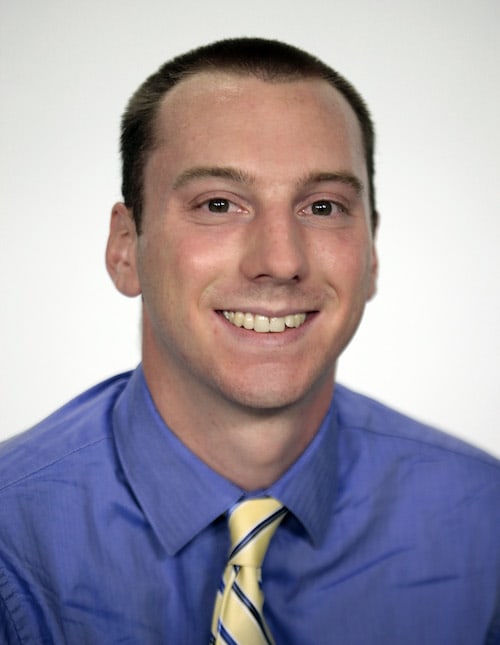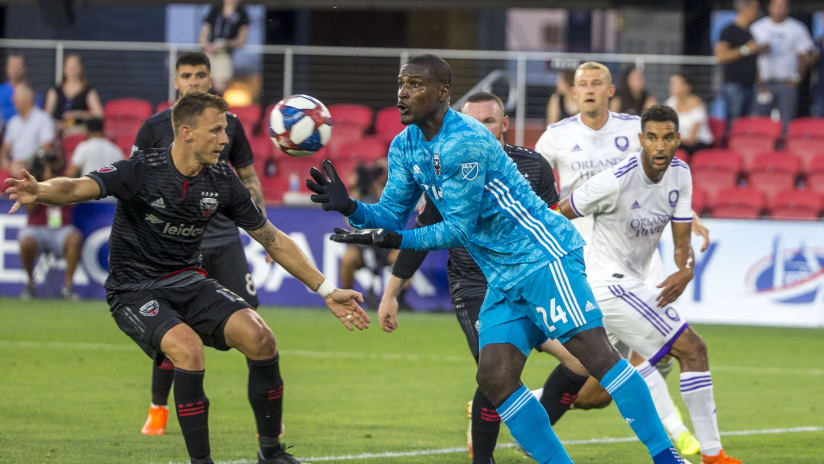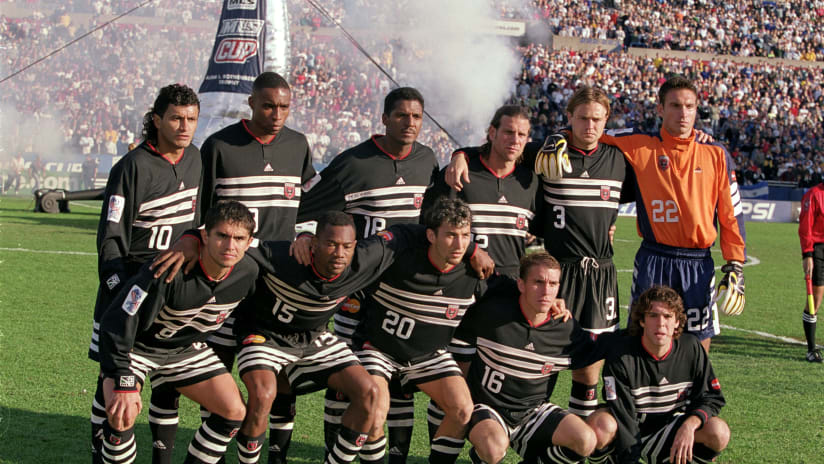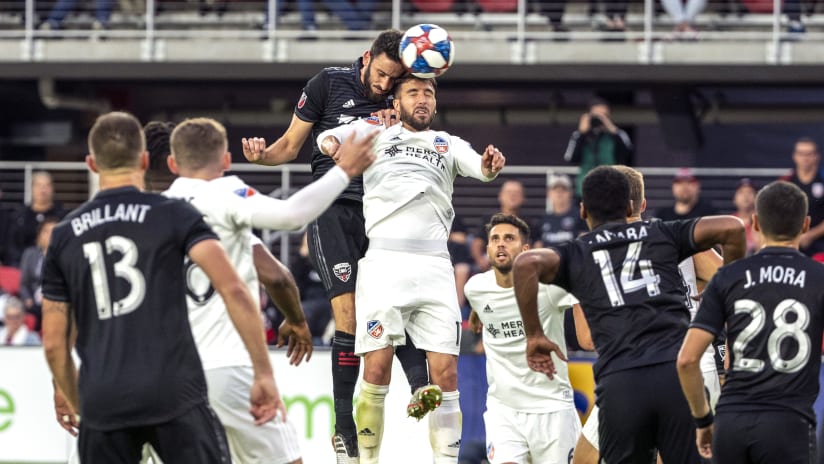Twenty years ago, on Nov. 21, 1999, D.C. United captured its third MLS Cup in four seasons to cement its legacy as the first true dynasty in league history, a claim that would be strengthened when the Black-and-Red captured another title five years later. And on that balmy November afternoon at Foxboro Stadium, before a raucous crowd of nearly 45,000 fans, United bested the LA Galaxy in a 2-0 victory that served as the capstone for a remarkable campaign.
That season, under the direction of first-year coach Thomas Rongen, United posted the best record in MLS (23-9), scored the most goals in MLS (65) and finished with the best defensive performance in franchise history (43 goals conceded). Defender Jeff Agoos, midfielder Marco Etcheverry and forward Jaime Moreno were all named to the MLS Best XI, tied with the Galaxy for the most players from a single team.
Over the next few weeks, we will recreate the ’99 season through the memories of those who lived it: the players, coaches and staff members who exorcised their demons from a crushing defeat in the 1998 MLS Cup to hoist a trophy and parade it through the streets of Washington D.C., rewarding those faithful fans who had stuffed RFK Stadium to its capacity all year.
Our next viewpoint comes from head coach Thomas Rongen, who joined the club prior to the ’99 season. Rongen, a Dutchman, had spent the prior two seasons coaching the New England Revolution, from 1997-98, and spent the league’s inaugural season running the Tampa Bay Mutiny in ’96. He would remain with D.C. United through 2001 before accepting a job with United States U-20 men’s national team. His managerial career continued with stops at Chivas USA, American Samoa, Toronto FC (academy director) and the Tampa Bay Rowdies.
Rongen’s year-by-year league record with the Black-and-Red was as follows:
1999 — 23 wins, 9 losses
2000 — 8 wins, 16 losses, 6 draws
2001 — 8 wins, 16 losses, 2 draws
iTunes | Spotify | Stitcher | Google Play | SoundCloud
Q: You were already coaching in MLS when you accepted the job with D.C. United. What did you know about the club and what attracted you to that opportunity?
A: As early trendsetters in MLS, D.C. United from day one with Kevin (Payne) and Bruce (Arena) at the helm looked like a real team. Their own facility, players and management together at one facility, done right with a proper name, you know? They stuck to their guns when it came to originally naming the team. And their play reflected that. They were (one of the) best teams in ’96 with my team, the Tampa Bay Mutiny, but I was always attracted to D.C. the first three years that I was with both the Mutiny and with the New England Revolution.
At the end of the day, the attraction to me was the way that the club philosophically — off but more so on the field — fit well with my own way of thinking for how the game should be played. Bruce was very proactive, Bruce was attacking-minded, Bruce played a good brand of football, and that’s something that, you know, is in my genes as a Dutch-born player: 4-3-3, play in the half of the opponent. Those are all the things that attracted me to D.C. United.
And at the end of the day, actually, Bruce had recommended me to Kevin Payne and said, ‘Based on what I’ve seen from other teams around the league, Thomas Rongen’s team comes the closest to what we’re trying to achieve in terms of playing style.’ So that was a huge compliment when Kevin reached out to me and said he was aligned with Bruce and thought that I was the best guy for the job.
And here we are in ’99, we start the season, fast forward and we win an MLS Cup in my first year, which was pretty special for me and obviously the third one for D.C. United in four years. Talking about the dynasty, which we all had created through ’99, which is something I’m still extremely proud of to say that I was part of a club that dominated MLS early on and still has, you know, two or three or four players that will fit into my Best MLS XI all time. Be it Marco Etcheverry, be it Eddie Pope, be it Jaime Moreno and the list goes on of players that I still put in my all-time Best MLS XI.
So it was a pleasure for me to be part of that organization, to win something, obviously, but also to be part of something really special that was created and to this day still exists: from the fanbase, to the players, to the way they identify players, to a certain mindset that comes with being a D.C. United player, how you carry yourself on and off the field — all of this was set in the first few years. And to be part of that and being somewhat of a trailblazer in MLS with Bruce and Bob Bradley and, bless his heart, Sigi Schmid, those were special times.
What was your impression of the team and the type of talent it had once you got your eyes on them in training every day?
A: Well, to be real honest with you, I said to myself, ‘Less is more. And if it ain’t broke, don’t fix it.’ I tweaked some things and made it mine, so to speak. Smaller tactical tweaks that made us even better, I think.
In terms of motivation, the team was so ready to win after they lost (to the Chicago Fire) that I ended up with a team that was highly motivated from day one because they lost against Chicago in ’98 and wanted to get back to the final, which we eventually did.
Our nucleus still was, obviously, national team players: Eddie Pope, Carlos Llamosa, Jeff Agoos, the engine in midfield Marco Etcheverry, the tough-guy Richie Williams, the speedster Roy Lassiter, the wizard Jaime Moreno, the best two-way player in the league Ben Olsen. But overall, we pretty much pushed the envelope in each and every game and became a Supporters’ Shield winner.
The big crunch-time game was actually Columbus at home (in Game 3 of the Eastern Conference Finals) after we’d lost (5-1) in Columbus and they thought it was over. I remember so vividly: Eddie Pope is a quiet guy, but Eddie Pope walked in the locker room after the game and basically went, ‘Over my dead body are these bunch of (jerks) going to take this. Let’s go back home.’
Then the first play of the game (back home at RFK Stadium in Game 3) is a ball to Robert Warzycha (of the Crew) and Marco comes out of nowhere as a freight train and tackles him literally almost into La Barra Brava. So I looked at my assistant coaches and went, ‘OK, game on.’ And we did beat them (4-0) to reach the finals and then beat a very good LA Galaxy team.
But overall, we competed like (maniacs) in practice each and every day. The guys enjoyed that, and it carried over into the game. As I said, we brought in one or two players that made us even a little bit better that year. And then we adjusted a few things and went between a 4-3-3 and a 4-4-2 depending on our opponents and depending on the injuries.
But as I said again, don’t fix it if it ain’t broke. Thank you Bruce Arena.
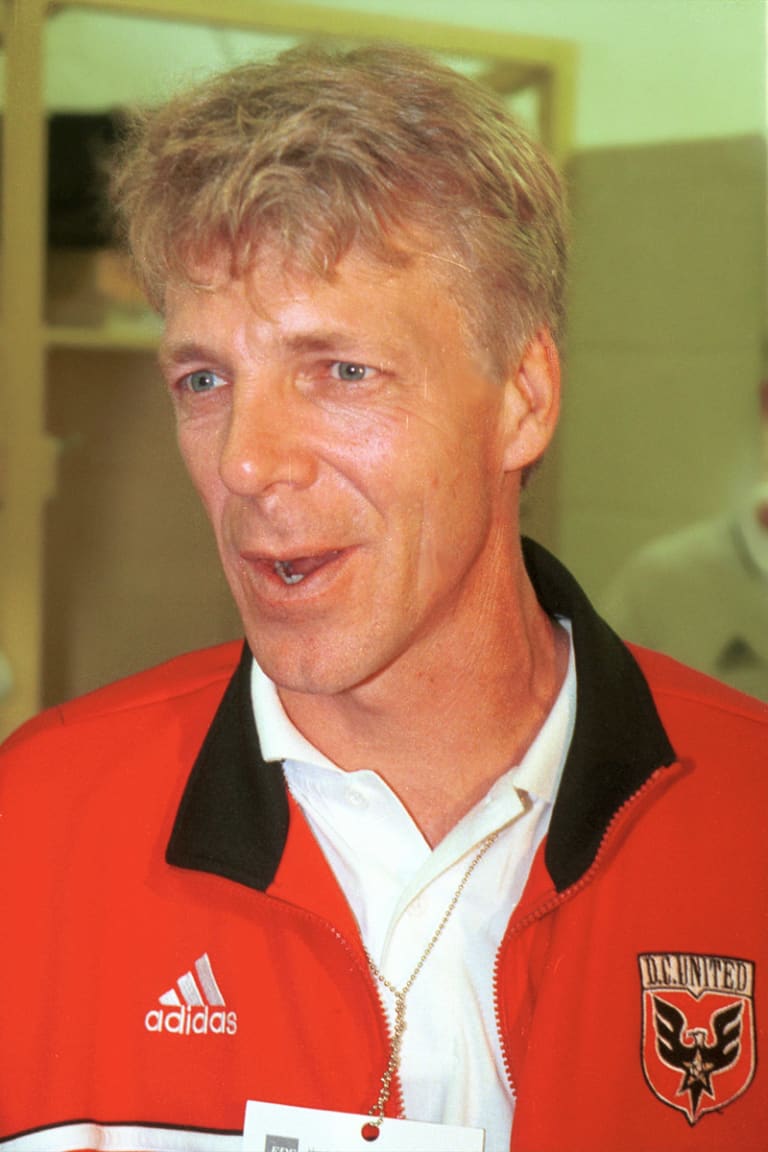
You mentioned your fondness for attacking football through your Dutch heritage. So I’m curious: When you had people like Roy Lassiter and Jaime Moreno and Marco Etcheverry who you could watch them every day in training and on the field, was that pleasing to you given the style of football you were brought up with?
A: Yeah, without a doubt. It reminded me a little bit of my first year, you know, when I had Roy Lassiter and Carlos Valderrama and Steve Ralston and Giuseppe Galderisi with the Tampa Bay Mutiny. That was a great front four as well. But this one was just another level, and the reason being is that Marco — whereas Carlos (Valderrama) was probably one of the best one- or two-touch players in the world, Marco could change the field for us because he could play balls over distance on a dime for people. Switching the point of attack, moving a back four or allowing himself dribble penetration or striking from distance, great set piece taker. It was a lot of fun to work with that group.
And that front four or five got tested each and every day because normally we would put our starting four or five against our starting back four and holding midfielder (in practice). Those were unbelievable 5v5 games. They might have been better than some of the games in MLS. Jaime Moreno up against Eddie Pope. Marco Etcheverry up against Richie Williams. Roy Lassiter up against Carlos Llamosa. Ben Olsen up against Jeff Agoos. Those were battles in practice that I still savor.
What do you remember about the atmosphere at RFK Stadium and the type of support you had in the city at that time?
A: The best. The absolute best. I remember in 1996 I was chosen to coach the first MLS All-Star game because my team was in first place. And the last game before the All-Star game, we played on a Wednesday night at RFK in the rain. And Kevin Payne until this day — and Bruce Arena, too — will say that was the first real game in Major League Soccer. Twenty-plus thousand people showed up in the rain. ... That game on a Wednesday night with RFK just bouncing on the opposite side was one hell of an experience. ... Great, great memories of a stadium that needed some renovation but was very special to all of us that were part of that first four, five, six, seven, eight years.
I don’t know if you remember this specifically, but in August and September of that ’99 season you won 11 games in a row just before the playoffs. When that team was at its best, why was it able to win time after time after time?
A: Tremendous amount of confidence. And not cocky because the players were very good under direction to police themselves, so to speak, both in practice and in the locker room. There was a level of discipline that they adhered to. They played hard within the game. And when we were on, which we were on quite often, we knew that nobody could stop us. We would go places, look at each other in the tunnel against a hostile crowd and a pretty tough opponent and went like, ‘OK, bring it on. Bring it on baby.’
Make it happen, refuse to lose — those were terms that we used. It was not just about let’s win. No, refusing to lose was another level for us. Pushing the threshold of pain a little bit further. So we had the right mentality with obviously tremendous players. We had a tremendous sense of being in terms of our team characteristics, our strengths and weaknesses, and we felt we were — without being cocky — invincible at times. And that run was pretty special.
Even going down in Colorado in high altitude at halftime and for me to go, ‘If I can roll a cigarette with one hand, there’s no reason why we can’t score three goals in the second half.’ That was my halftime speech. I used to roll my own cigarettes when I was a student, and the guys went, ‘Yup, all right T.R., let’s do it.’
And that’s a great feeling for a coach as well. Yes, direction is important. Yes, in-game management for a coach and making the right subs is important. But there’s nothing better than being able to touch a team and they respond in ways that other teams wouldn’t by wink of the eye, by a whistle. They knew my whistle. When I whistled, people would pay attention. When I raised my voice, they would pay attention. When I would be calm and real confident in myself, like at halftime when I rolled that cigarette with one hand, they knew that they had to come back and get the job done, which they did.
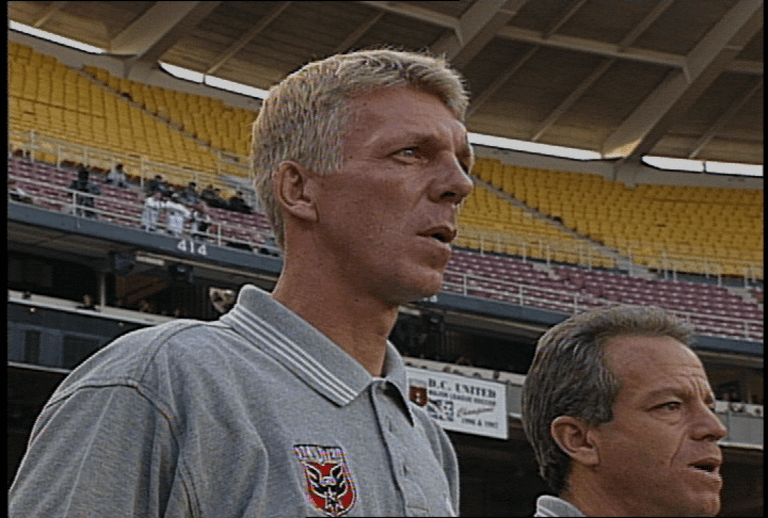
We touched on the Columbus series a little bit. After that win in Game 3 of the Eastern Conference Finals, what do you remember about the buildup to MLS Cup and how were the training sessions when you were on the cusp of reaching your goal?
A: We were confident. We weren’t cocky. The one thing that I didn’t have to mention very often was that loss the year before against Chicago, and that hurt. This team hated losing. There was no way they were going to lose that game (against the Galaxy). We practiced short but intense. We kept everybody on board, so to speak. Didn’t let anybody wander, kept the focus on the (two halves of soccer left to play) with a lot of hectic stuff around it. And we were able to zone in on just the task at hand. That was, again, an ability of the team, which was remarkable. It takes leadership, it takes an understanding of the situation, it takes keen learners, it takes guys that have an open mind and are willing to address issues, confront each other, make each other better.
That was just such a great environment. I grew as a man and as a coach each and every game with those guys, because they challenged me. And that was great. It was democracy with a little bit of a Dutch ruler on top of it.
How would you describe the feeling you had when the final whistle sounded and you guys won MLS Cup?
A: Oh, I cried actually. The first thing was somehow Ben Olsen just jumped in my arms. And he was crying, so I started crying. And then I went back and rolled a cigarette with two hands, actually, outside of the stadium.
Then all of a sudden I already started thinking about next year because we were way over the (salary) cap budget-wise, and I knew I had to cut some players. I enjoyed a moment with Ben and the guys on the field. I enjoyed a little moment with myself. And then an hour later it was back to business. ... It was almost like a relief before I switched the button, and then literally the next day I had to (make roster decisions for the future). ... So you win and then you know already next year will be harder because of the interesting MLS rules and regulations.
Twenty years later, when you think back about the ’99 season or maybe when you run into some of your old players, what does it feel like and why was that such a special season in your mind?
A: Because of the things you just mentioned. Ben still calls me once in a while to ask for advice and say hi. Marco and Jaime (are people) I stay in touch with. Eddie Pope has moved on in the business field that I’m part of as well. Some people have gone into the MLS front office, like Jeff Agoos, or they start coaching, like Carlos Llamosa, and obviously Ben Olsen, Richie Williams. So it’s pretty interesting to see that you can still follow those guys, that you still have contact with those guys, with some more than others.
But that speaks volumes because in this business, when you move on as players and coaches do, sometimes you lack a little trust because you know you’re going to get fired again and you have to move somewhere else. You’re driven by fear of failure. In this case with D.C. United, it was never fear of failure. It was always one big family going to work and then kicking some (butt). And that family is still there for each other when needed or not needed. That was a special quality of D.C. United that I’ve always enjoyed because it was a family from top to bottom.


